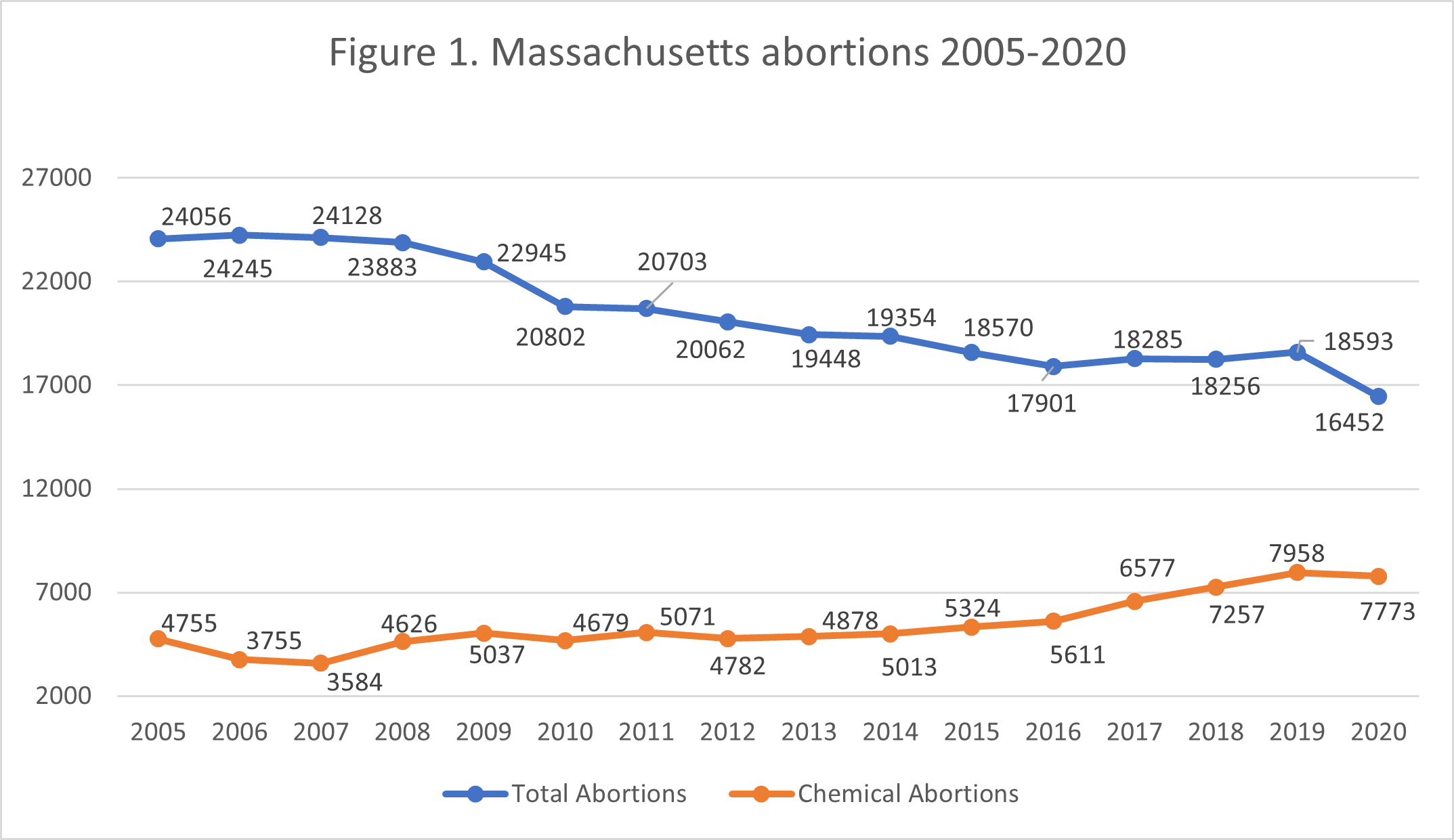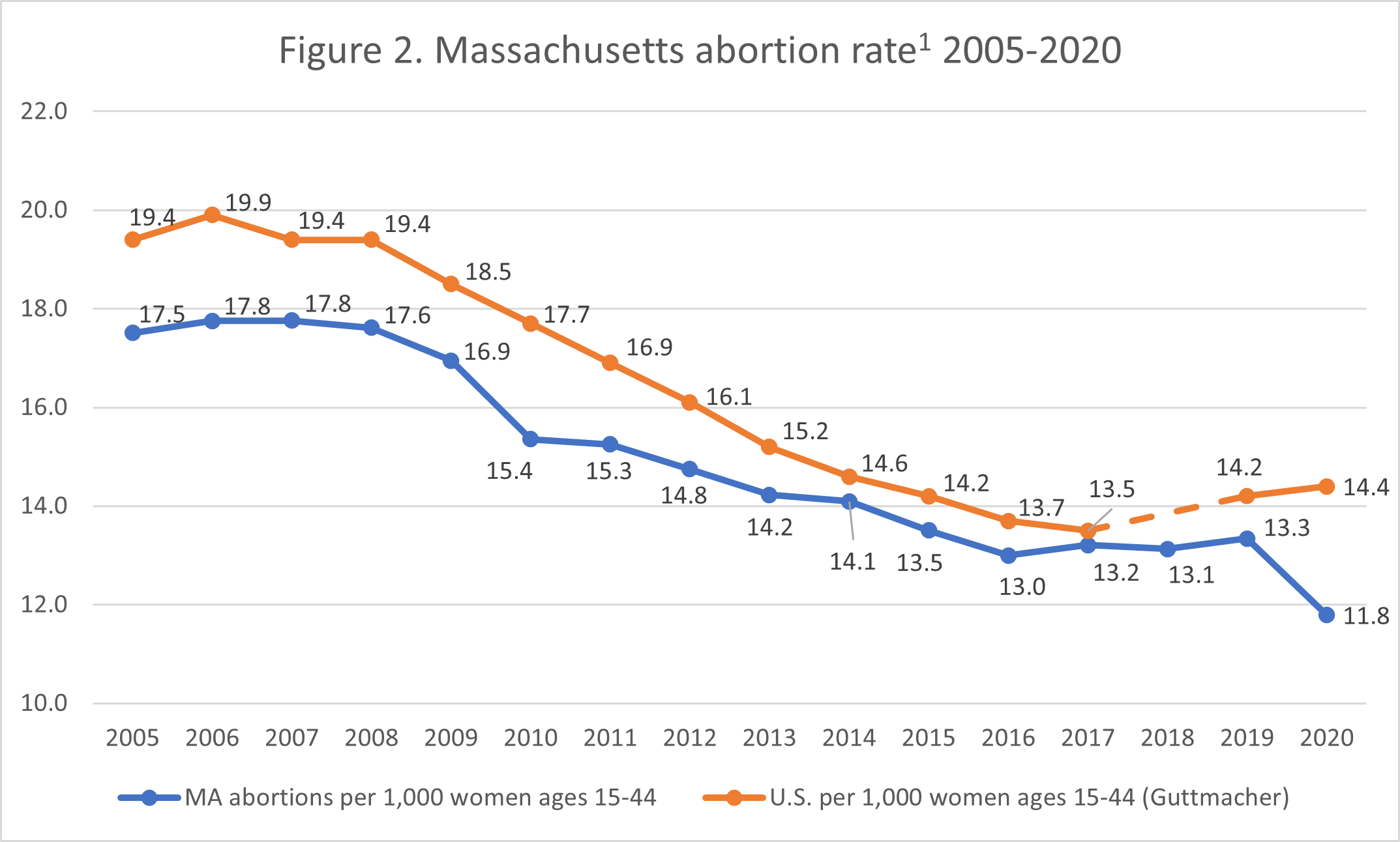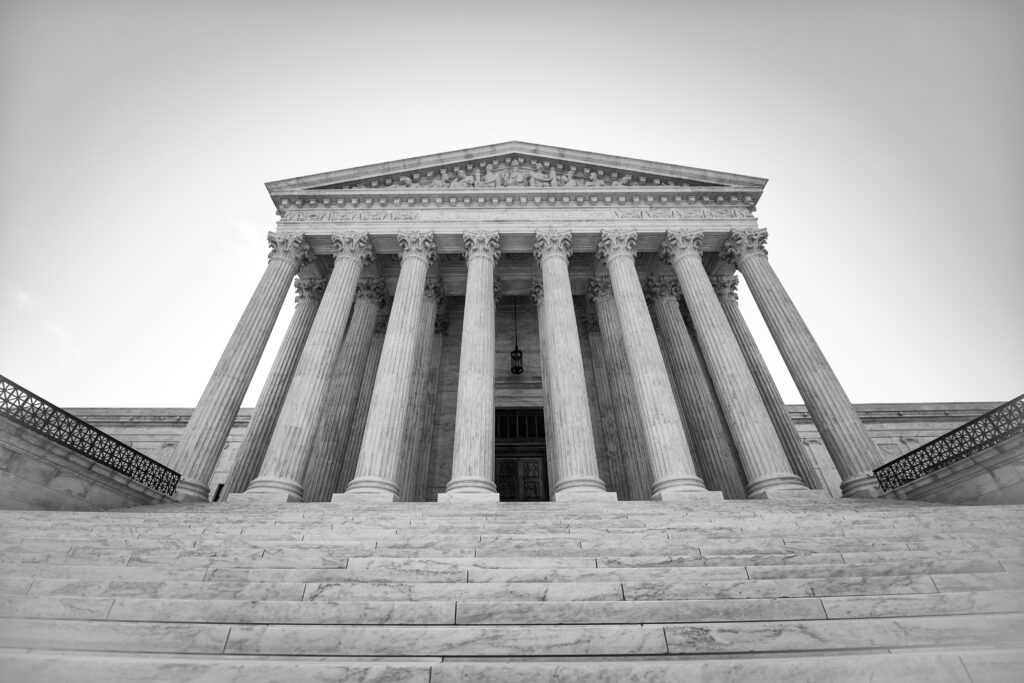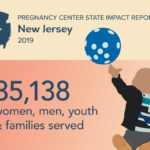Abortion Reporting: Massachusetts (2020)
The Massachusetts Department of Public Health provided Massachusetts’ 2020 abortion statistics to the Charlotte Lozier Institute upon request. Abortions in the Bay State decreased from the previous year.
Statistics and Changes in Massachusetts Abortions, 2019-2020

Abortion Totals and Trends
In 2020, there were 16,452 abortions reported in Massachusetts, down 12 percent from 2019 (Fig. 1). Chemical abortions composed 47 percent of the total, decreasing from 7,958 in 2019 to 7,773 in 2020 (down 2.3 percent). The Charlotte Lozier Institute (CLI) estimates that Massachusetts’ 2020 abortion rate was 11.8 abortions per 1,000 women ages 15 to 44, 11.5 percent lower than the 2019 abortion rate (Fig. 2).
State Report Summary
In 2020, the vast majority of the abortions reported in Massachusetts (94 percent) were performed on state residents, while four percent were performed on women from out of state and 396 abortions (two percent) were on women of unknown residency.
Seven percent of the abortions were on girls age 19 or younger, a lower percentage than in almost every other state that reports this data to the CDC, except Missouri (4.8 percent) and Virginia (9.5 percent). Previously, Massachusetts required that parental consent be obtained before an abortions were performed on minors, but in 2020, Massachusetts removed these protections from 16- and 17-year-old girls.
Just over a quarter, 26 percent, of the abortions were performed on women ages 20 to 24, and 27 percent were on 25- to 29-year-olds. Thirty-five percent of the abortions performed in Massachusetts were on women in their thirties, and five percent were on women age 40 or above.
In 2020, 46 percent of Massachusetts abortions were performed on white women, and 20 percent were on black women. Five percent of the abortions were performed on Asian women, and 13 percent were obtained by women of other races. Race was not specified for 15 percent of the abortions. CLI estimates that Massachusetts’ black abortion rate of 21.1 abortions per 1,000 women ages 15 to 44 was three times higher than the white abortion rate of 7.0. Fifty-five percent of the abortions were performed on non-Hispanic women, 19 percent were on Hispanic women, and over a quarter (26 percent) were on women of unknown ethnicity.
Six percent of the abortions occurring in Massachusetts in 2020 were on women who had not completed high school. Seventeen percent were obtained by women with a high school diploma as their highest level of education, and 16 percent were performed on women who had attended college but did not have a degree. Five percent of the abortions were on women with an associate degree, 11 percent on women with a bachelor’s degree, and four percent on women with a postgraduate degree. However, level of education was not reported for 42 percent of abortions.
Sixty-six percent of the abortions were on unmarried women, while 14 percent were performed on married women, and a fifth were on women of unknown marital status. Half of the abortions were performed on women with no previous abortions. Twenty-six percent were performed on women with one prior abortion, and 20 percent were on women with two or more previous abortions. Thirty-eight percent of the abortions were on women with no previous live births, compared to 22 percent with one live birth and 28 percent with more than one. The number of prior abortions was not reported for four percent, and the number of previous live births was not reported for 11 percent.
Chemical abortions made up 47 percent of the total in 2020. Thirty-seven percent of the abortions were via suction curettage, and 16 percent were dilation and evacuation abortions. Sixty-three abortions (0.4 percent) were sharp curettage procedures, and one was an intrauterine saline instillation abortion. Just nine abortions were performed via some other means.
Seventy-three percent of Massachusetts’ abortions were performed at eight weeks of gestation or earlier, and 18 percent occurred between nine and 12 weeks. Six percent of the abortions were reported between 13 and 18 weeks of gestation, and two percent were performed between 19 and 23 weeks. Three abortions were performed at 24 weeks of gestation or later.
Eighty-one percent of Massachusetts 2020 abortions were performed in clinics. Eighteen percent were performed by hospitals, and one percent were reported by physicians. Planned Parenthood’s three abortion centers accounted for 52 percent of all abortions reported in Massachusetts and 64 percent of the abortions performed in clinics. The Planned Parenthood of Greater Boston clinic performed more than a quarter (29 percent or 4,808 abortions) of the state’s total abortions in 2020.
COVID-19 and Abortion in Massachusetts
Similar to New York state in 2020, during a year when coronavirus (COVID-19) ravaged both New York and Massachusetts, Massachusetts also saw a large decrease in the number of abortions being performed in the state. Furthermore, also like New York, abortion remained available in Massachusetts despite many elective healthcare procedures being severely restricted during the early stages of the pandemic. A study found that while changes to abortion availability during the pandemic were not responsible for Massachusetts’ large decrease in the total number of abortions, other barriers related to the pandemic (i.e., fear of infection, financial and travel restrictions, etc.) could be at least partially responsible for the state’s decrease in abortions in 2020.
Legislative Changes
Immediately following the United States Supreme Court decision to overturn Roe v. Wade, the former governor of Massachusetts, Charlie Baker (R), signed an executive order declaring that the state would not cooperate with other states’ investigations or extradition requests regarding providers who performed or patients who received an abortion in Massachusetts. The executive order also stated that abortion providers would not lose their medical licenses over charges from other states. Following this, one month later in July 2022, the Massachusetts legislature passed and Baker signed legislation into law that reiterated the state’s commitment to shielding abortion providers and other “reproductive health services” providers from lawsuits and investigations initiated in other states.
This legislation also mandates that all public colleges and universities in the state provide chemical abortion at their campus health centers and that insurance providers cover abortion despite the risks that chemical abortion poses. Lastly, the legislation intended to clarify the ROE Act passed in 2020 that codified Roe v. Wade into state law. The July 2022 legislation clarified that abortions after 24 weeks are permissible when any of four vague conditions are met:
- When abortion is “necessary to preserve the life of the patient”
- When abortion is “necessary to preserve the patient’s physical or mental health”
- The unborn baby has a “lethal fetal anomaly or diagnosis.”
- The unborn baby has “a grave fetal diagnosis that indicates that the fetus is incompatible with sustained life outside of the uterus without extraordinary medical interventions.”
State Ranking
In CLI’s 2016 survey of state abortion reporting, Massachusetts was ranked near the bottom of the list due to its failure to publish its abortion reports online. Massachusetts could improve its reporting by making reports accessible on the website of the Department of Public Health, as most other states do. Massachusetts could also collect and report information on complications caused by abortion.


- Rates were calculated by CLI using the following formula: (total number of abortions performed in Massachusetts ÷ number of resident women ages 15-44) x 1,000. Rates may differ slightly from previous CLI articles due to revised population estimates. Population estimates were obtained from the CDC WONDER database. Estimates for 2005-2009 are intercensal estimates of the July 1 resident population. Estimates for 2010-2020 are Vintage 2020 postcensal estimates of the July 1 resident population. Estimates were produced by the U.S. Census Bureau and the National Center for Health Statistics.























